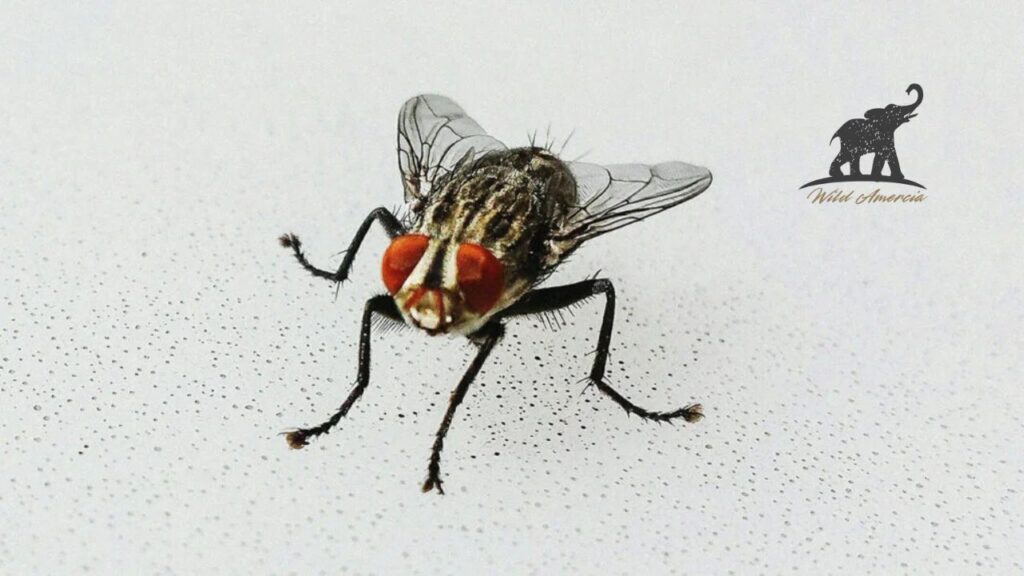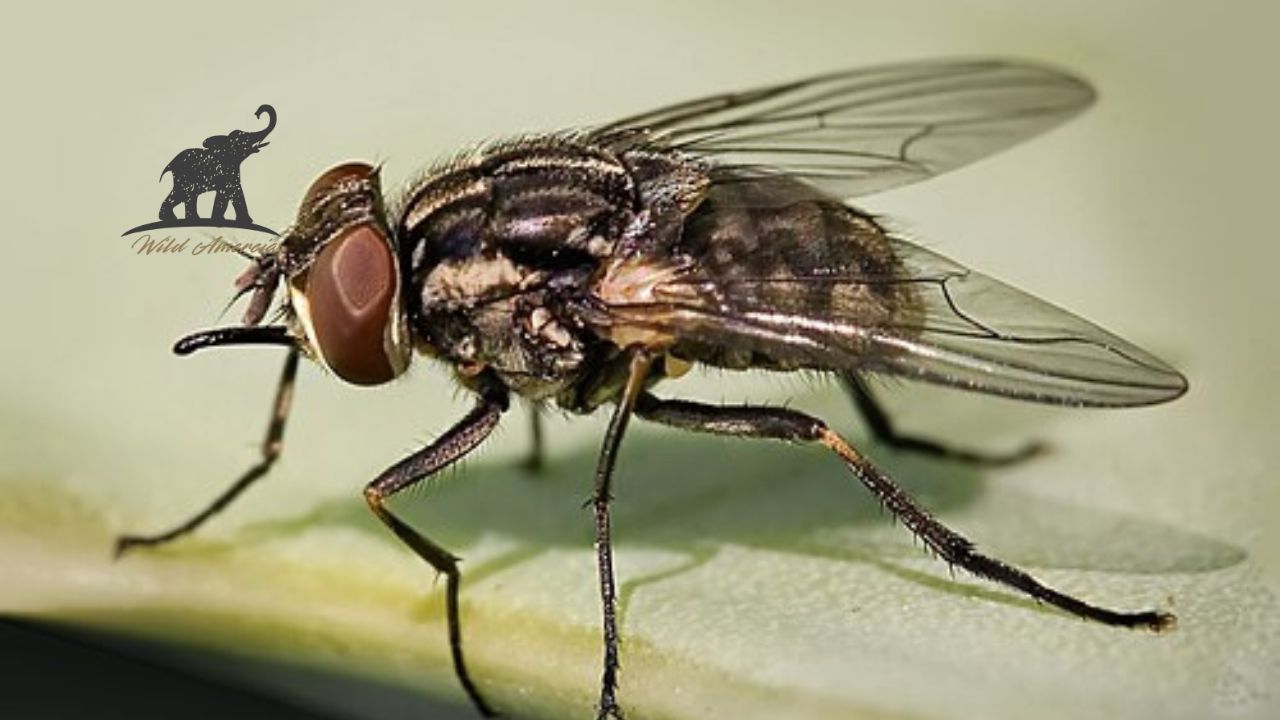That constant buzzing sound can be incredibly frustrating. Dealing with a house fly infestation is more than just a minor annoyance; it’s a battle for the comfort and hygiene of your home. These persistent pests are not only irritating but also carry diseases, making their presence a genuine health concern. If you’re tired of swatting and shooing, you’ve come to the right place. This guide will walk you through everything you need to know to reclaim your space from these unwelcome guests.
A fly infestation in the house can escalate quickly, turning a couple of flies into an overwhelming swarm. Understanding the root cause is the first step toward a lasting solution.
Quick Guide to Managing a House Fly Infestation
| Feature | Description |
| Primary Causes | Poor sanitation, uncovered garbage, pet waste, decaying organic matter, moisture. |
| Common Signs | Frequent fly sightings, clusters of flies, maggots (larvae), fly specks (feces). |
| Top Solutions | DIY traps, commercial sprays, fly paper, electric zappers, professional pest control. |
| Prevention Tips | Seal entry points, proper waste management, clean spills immediately, use screens. |
What Causes a House Fly Infestation?
Flies don’t just appear out of thin air. Specific conditions attract them and encourage them to breed. Identifying these triggers is crucial for tackling the problem at its source and preventing a future house fly infestation.

Poor Sanitation and Available Food Sources
The primary reason for any pest problem, including a fly infestation house, is the availability of food. House flies are drawn to decaying organic material.
- Uncovered Trash Cans: Kitchen bins are a feast for flies. Food scraps, especially meat and rotting vegetables, provide the perfect breeding ground. This is a leading factor in what causes fly infestation in house.
- Dirty Drains: Gunk and food particles accumulate in kitchen and bathroom drains, creating an ideal environment for drain flies and contributing to a wider infestation of flies in house.
- Pet Waste and Food: Leaving pet food out for extended periods or failing to clean up pet waste promptly in the yard can lead to a fly infestation outside house, which quickly moves indoors.
- Compost Piles: While great for your garden, an improperly managed compost pile can become a major source for a house fly infestation if it’s too close to your home.
Structural and Environmental Factors
Sometimes, the problem isn’t just what’s inside your home but the home itself. Even a fly infestation in clean house can happen if pests find an easy way in.
- Open Doors and Windows: This is the most obvious entry point. A simple lack of screens can be an open invitation for a sudden house fly infestation.
- Cracks and Gaps: Flies are small and can squeeze through tiny openings in your home’s foundation, walls, or around pipes. These vulnerabilities can lead to a frustrating infestation of house flies in my house.
- Weather Changes: Many people notice a flies infestation in house in summer. The warm weather accelerates the fly life cycle, from egg to adult, in as little as ten days. Conversely, a flies infestation in house in winter might be caused by cluster flies seeking warmth and shelter inside your walls.
A sudden increase in flies can be alarming. A fly infestation in house suddenly often points to a new breeding site, such as a dead animal in a wall void or attic, or a forgotten bag of rotting potatoes in the pantry. This is also a common reason for a big fly infestation in house.
Recognizing the Signs of an Infestation
How do you know if you have a few stray flies or a full-blown house fly infestation? Look for these tell-tale signs. If you find yourself thinking, “my house is infested with flies,” these clues will confirm your suspicions.
Obvious Signs
- Constant Fly Sightings: Seeing large numbers of flies buzzing around your kitchen, garbage cans, or light fixtures is the most apparent sign. This can range from a common house fly infestation to other species like a black fly infestation in house.
- Maggots: This is a horrifying but definitive sign of a fly maggot infestation house. Maggots are fly larvae, and finding them means flies are actively breeding in your home. They often appear in trash cans, rotting food, or pet waste areas. Finding them is a clear signal to begin figuring out how to get rid of house fly infestation.
- Fly Specks: These are small dark spots, which are the flies’ feces and vomit. You might find them in clusters on walls, light fixtures, countertops, and upper areas of a room.
Subtle Signs
- Buzzing Sounds: You might hear the constant, low hum of flies, especially in quiet areas or near windows where they congregate.
- Pest Clusters: Some species, like cluster flies, gather in large numbers in attics, wall voids, or around windows, especially on sunny sides of the house, leading to a cluster fly infestation in house.
Many homeowners have shared their frustrating experiences online. One user on a popular forum mentioned, “I couldn’t figure out why is my house infested with flies until I found a bag of old potatoes in the back of my pantry. The smell was awful, and it was ground zero for a massive house fly infestation.” This highlights the importance of thorough investigation.
How to Get Rid of a House Fly Infestation: Effective Solutions
Once you’ve confirmed a house fly infestation, it’s time to act. A combination of methods is often the most effective approach. The best way to get rid of fly infestation in house involves both elimination and prevention.

DIY and Home Remedies
For a minor problem, or as a first line of defense, these methods can be surprisingly effective. Many people wonder how to get rid of fly infestation in house remedies.
- Vinegar and Dish Soap Trap: This is a classic for a fruit fly infestation in house. Fill a small bowl with apple cider vinegar and a few drops of dish soap. The vinegar attracts the flies, and the soap breaks the surface tension, causing them to drown.
- Fly Paper and Sticky Traps: Old-fashioned but effective. Hang these strips in areas with high fly activity. They are a simple tool for getting rid of house flies infestation.
- Herbal Repellents: Flies dislike the smell of certain herbs like basil, mint, lavender, and rosemary. Placing these plants near windows and doors can help deter them.
Dealing with a sudden fly infestation in house requires quick action. You need to find the source and eliminate it before trying these trapping methods.
Commercial Products
When home remedies aren’t enough to handle a severe house fly infestation, you may need to turn to stronger options.
- Insecticide Sprays: Sprays designed for flying insects can kill flies on contact. Use them cautiously, especially in kitchens and around food, and follow the manufacturer’s instructions.
- UV Light Traps: These devices use ultraviolet light to attract flies and then either trap them on a sticky board or electrocute them. They are a great solution for a persistent house fly infestation in kitchen.
- Outdoor Fly Traps: To control the problem at its source, place these traps away from your house to lure flies away from your living spaces. This is key for how to get rid of house fly infestation outside.
When to Call a Professional
Sometimes, a house fly infestation is too overwhelming to handle on your own. If you can’t find the breeding source or if the population is out of control, it’s time to call a pest control expert. Professionals can identify the specific type of fly—whether it’s a flesh fly infestation in house or a lesser house fly infestation—and apply targeted house fly infestation treatment.
Customer reviews for professional services often highlight their effectiveness. One client rated a local service 5/5 stars, stating, “We had a sudden infestation of house flies that was a complete nightmare. The technician found a dead squirrel in our attic that was causing the problem. They removed it and treated the area. The flies were gone in a day!“
Prevention: Keeping Your Home Fly-Free
Eliminating a house fly infestation is only half the battle. Preventing their return is the ultimate goal. How to stop house fly infestation comes down to diligence and cleanliness.
Seal Entry Points
- Install or repair screens on all windows and doors.
- Seal cracks and holes in foundations, siding, and around pipes with caulk.
- Use weather stripping on doors and windows to close gaps.
Maintain a Clean Environment
- Use trash cans with tight-fitting lids and take out the garbage regularly.
- Clean your kitchen daily. Wipe up spills, crumbs, and grease immediately.
- Keep sinks and drains clean. Pouring boiling water or a drain cleaner down them weekly can help.
- Pick up pet waste from your yard promptly.
Manage Outdoor Attractants
- Keep compost bins sealed and located as far from the house as possible.
- Ensure your yard is free of decaying organic matter like fallen fruit or grass clippings.
- If you notice a fly infestation outside my house, inspect for standing water, as it can attract some fly species.
By adopting these habits, you can significantly reduce the risk of another house fly infestation.
Frequently Asked Questions (FAQs)
Q: Why is my house suddenly infested with flies?
A sudden fly infestation in my house is almost always linked to a new, undiscovered breeding source. This could be anything from a dead animal in a wall, attic, or crawlspace, to a spilled food item that has started to rot, or even a backed-up drain. The key is to play detective and find that source.
Q: How do you get rid of a house fly infestation quickly?
To get rid of a house fly infestation fast, you need a two-pronged attack. First, find and eliminate the breeding source. Second, use immediate kill methods like fly sprays, swatters, and traps to reduce the adult population. A vacuum cleaner with a hose attachment is also a surprisingly effective tool for quickly capturing large numbers of flies on windows or walls.
Q: How long does a house fly infestation last?
The duration depends on the source. If you eliminate the breeding ground, the existing adult flies will die off within their natural lifespan (about 15-25 days). However, if the source remains, the house fly infestation will continue indefinitely as new generations hatch.
Q: What is the difference between a house fly and a fruit fly infestation?
A house flies infestation involves larger, grayish flies attracted to general decaying matter, while a fruit flies infestation in house involves very small, brownish flies that swarm around ripe or fermenting fruits, vegetables, and sugary spills. The traps for each are also different; fruit flies respond best to vinegar-based traps.
Q_ What causes fly infestations in the house?
Ultimately, a house fly infestation is caused by flies finding a suitable place to eat and lay their eggs. This is almost always decaying organic material. From the garbage can to pet waste or a forgotten piece of food, eliminating these sources is the only way to solve the problem for good.
Final Thoughts
A house fly infestation is a deeply unpleasant experience that can make you feel like your home is no longer your own. The constant buzzing and threat of disease can be truly maddening. But by understanding what causes flies to invade, recognizing the signs early, and taking decisive action, you can absolutely win this fight.
Start today by inspecting your home for potential breeding grounds and sealing any entry points. A little bit of prevention goes a long way. If the problem feels too big, never hesitate to call in professional help. You deserve to live in a clean, comfortable, and fly-free home.
Admin Recommendation
Cottonmouth Snakes in North Carolina (NC): Key Facts
The Fascinating World of Arctic Fox Fur












